Rome, the Eternal City. Thinking about Lazio, Italy’s capital is probably what first comes to your mind. With its fascinating history and numerous hotspots, you need to, no, absolutely must visit it. However, the region in Central Italy by the Tyrrhenian Sea has so many more small treasures and places worth seeing to offer between its never-ending coastline and the Abruzzo limestone mountains. We therefore show you the best of both worlds within the top 10 sights of Lazio: Rome’s most attractive highlights and lesser-known pearls throughout the entire region you shouldn’t miss by any means.
Colosseum in Rome
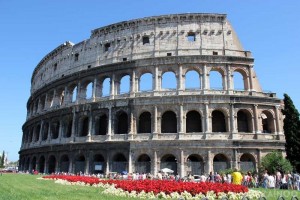
©ZAINOO Travel Guide
It hardly comes as a surprise that we start our tour in Rome. The imposing Colosseum built between 72 and 80 AD is situated east of the Roman Forum. The biggest amphitheatre ever built in the entire world used to be the site of brutal, bloodthirsty events. Nowadays, the ruins of this monumental structure are Rome’s main landmark. Each and every city tour inevitably leads to this benchmark of Roman architecture. Feel the special allure of the 80 entrances with their arches and take a look at the Colosseum’s innovative basement structure. History becomes palpable here.
St. Peter’s Square in the Vatican City
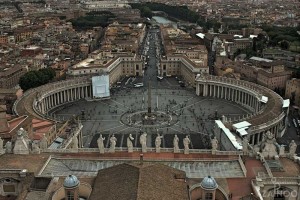
©ZAINOO Travel Guide
It is probably the most famous square in the world and located in the heart of Rome. Not only that, St. Peter’s Square is also the centre of the Vatican City. Stop by St. Peter’s Basilica right in the middle of the centre of power of the smallest country in the world (total area: only 0.44 km²!). Rome’s largest papal basilica houses the tomb of the apostle Paul plus numerous other papal tombs and reliquary caskets. Don’t sleep on the Vatican Museums! These papal art collections contain fascinating works from all over the world and, among other places, lead you to the legendary Sistine Chapel.
Trevi Fountain in Rome
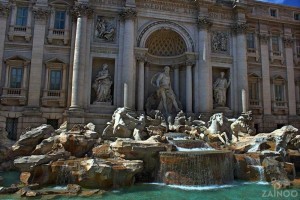
©ZAINOO Travel Guide
Recently restored, the Trevi Fountain currently depicts its original allure that skilfully captures the spectacular transition from the late baroque period to Classicism. Fed by an ancient aqueduct, which dates back to pre-Christian times, you will be enchanted by the fountain’s grand architecture in no time. Surrounded by a triumphal arch, the fountain’s motif deals with the force of the elements. The pieces made from marble and Travertine stone depict gods and mythical creatures. The Trevi Fountain shines particularly beautiful at night.
Abbey of Saint Scholastica in Subiaco
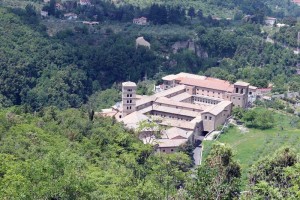
©ZAINOO Travel Guide
A young Benedict of Nursia retreated to one of the Subiaco caves around the year 500, where he spent three years living as a hermit. He later returned to this place to establish an abbey in a villa. 13 more abbeys were to follow over the course of the next 20 years, but the Abbey of Saint Scholastica in Subiaco still outclasses all of them. Assuming today’s appearance in the 12th century, nine arches built closely to the rock face display imposing power from the outside. The upper church features numerous frescoes from the Sienese School of painting dating back to the 14th and 15th century. Admire the oldest still preserved portrait of Francis of Assisi in the Chapel of Saint Gregory.
Abbey of Monte Cassino
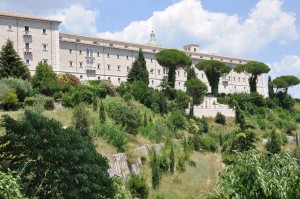
©Bigstock.com/Lipnicki
Benedict of Nursia also founded the mother monastery of the Benedictine Order in the Province of Frosinone. The abbey complex is situated in the middle of the downtown area of Cassino on a 516-m high hill. A cloister leads you into the hallowed halls that used to be the site of a temple consecrated to Apollo. The stairs lined by two statues lead to the upper Renaissance cloister. Saint Benedict found his last rest in the abbey cathedral.
Villa d’Este in Tivoli
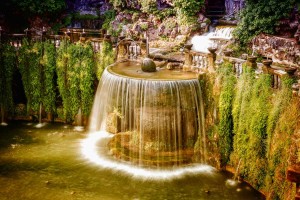
©Bigstock.com/marcorubino
Districts, sporting grounds, theatres – you’ll find various Tivolis all across Europe. The town of the same name located 32 km east of Rome is known for its Este villa. The pompous building was commissioned by Cardinal Ippolito II d’Este turning a Benedictine monastery into an impressive palace. Numerous ceiling fresco line the way of your tour of the villa. The gardens on the downward sloping hill are probably even more famous. Their terraces, ramps and stairs lead to the main garden with three fish ponds and various arcades. Enjoy the view of the picturesque valley!
Castello Orsini-Odescalchi in Bracciano
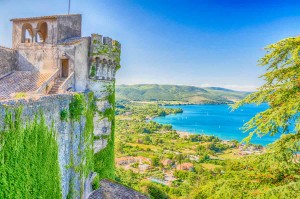
©Bigstock.com/marcorubino
A series of eruptions of the now dead Sabatino volcano once created the idyllically located Lake Bracciano. The noble families Orsini and Borgia had a medieval lakeshore fortification turned into a commanding castle in the 15th century. As the name already suggests, the Castello is now in possession of the Odescalchi family. The military architecture of the Renaissance architecture has been perfectly preserved to this day. Several celebrities, such as Michelle Hunziker and Eros Ramazzotti or Katie Holmes and Tom Cruise, got married here.
Catacomb of Callixtus in Rome
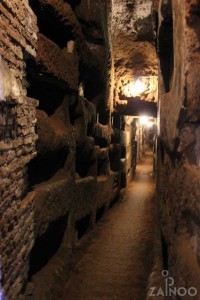
©ZAINOO Travel Guide
Did you know that there are around 60 ancient underground cemeteries hidden in Rome? The Catacomb of Callixtus was the first Christian catacomb and was named after the bishop of Rome, who died in 222 AD. Situated on the Appian Way, you are lead through a narrow corridor with sepulchral niches to the crypt, where 16 popes, predominantly from the 3rd century, are buried. Around one hundred martyrs and leading church dignitaries found their last home here.
Castel Gandolfo
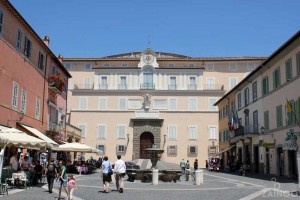
©ZAINOO Travel Guide
When the summer heat between July and September makes life in the papal palace in the Vatican City virtually unbearable, the pope moves into his summer residence in the palace of the small town of Castel Gandolfo at the edge of the crater of Lake Albano. Built on the ruins of an ancient summer palace, the 55-ha large estate features numerous wells and grottos, orchards and vineyards. While the public is not allowed to enter the residence, many believers meet every Sunday at 12 am in the summer months in front of the main gate to join the pope in prayer.
National Park of Circeo
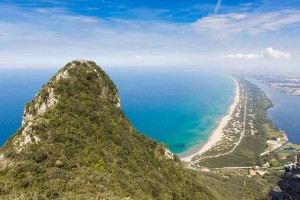
©Bigstock.com/michelealfieri
Find one of the oldest Italian national parks in southwestern Lazio. Parco Nazionale del Circeo was originally founded in 1934 to the protect the by now drained swamps of the Pontine Plain. Today’s 84.4 km² large park can be roughly divided into five main habitats: forest, promontory, the littoral dune, the humid area, and the island of Zannone. Be enchanted by the fascinating combination of classic Mediterranean nature and the remnants of swamp vegetation during your walks and hikes!
As you can see, Lazio has even more to offer than just its amazing capital Rome. Find many more travel tips for the region and the Eternal City on ZAINOO with the best tour suggestions, world-famous sights and small but nice insiders’ tips. Nothing stands in the way of your next trip to Italy now!